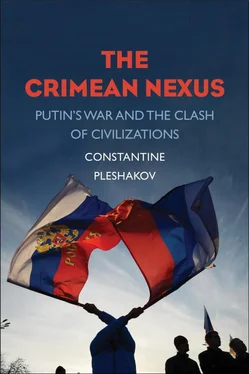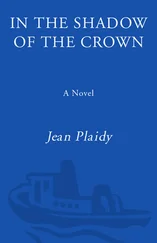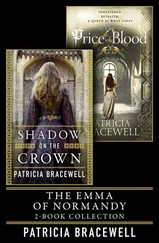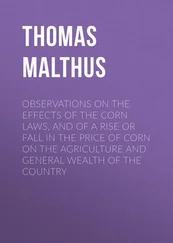The Armenians were “universally resident in the towns, either as merchants or burghers; and the application so contemptuously bestowed by Buonaparte on the English, seems, in truth, perfectly applicable to these people—they are really a nation of shopkeepers.” [39] Ibid., 163, 168, 175.
“The Jews are very numerous indeed in all the colonies, composing from one-fifth to one-tenth of the whole population. But they are, with very few exceptions, fixed in the class of burghers and shopkeepers, in every one of the towns of New Russia.” The Karaites, a Jewish group speaking a Turkic language and not recognizing rabbinical authority or the Talmud, were “commonly the most wealthy, and are on all accounts the most respectable. They hold themselves very distinct from their Polish brethren.” They “aver that they were no way concerned in, or consenting to,” Jesus Christ’s death, and “thus reject the dreadful responsibility entailed on them by the declaration of their forefathers—‘His blood be on us, and on our children.’” [40] Ibid., 178–179.
A few French and Swiss; some Poles (“tall, and finely formed: even the servants are superior in their manners to any other of the peasantry”). “The gypsies of the Crimea, called Tsigans, resemble in habits and appearance those of England, and, like them, exist chiefly by plunder. They are commonly the musicians at weddings, profess fortune-telling, and have all the tricks and cant of begging.” [41] Ibid., 182, 291–292.
Among the minorities Holderness described, three groups had been on the peninsula before the Russian conquest and even before the Tatars: Greeks, Armenians, and Karaites. Their salad bowl coexistence encouraged a niche economy: Armenians controlled exports of salt, with a town in the salt-producing area bearing the name Armenian Bazar; a thriving community of Karaites in Yevpatoria carried on commerce with Constantinople and the Levant. [42] Henderson, Biblical Researches , 289–291, 331; Mara Kozelsky, Christianizing Crimea: Shaping Sacred Space in the Russian Empire and Beyond (DeKalb: Northern Illinois University Press, 2010), 38.
Theoretically, in Crimea, Catherine practiced something we might call laissez-faire multiculturalism, yet in the process, the Tatar community got severely undermined. The Russians prided themselves on letting Crimean Muslims practice their faith, but at the same time, with the arrogance typical of a “civilizing” nation, they forced the Nogai Tatars to take up agriculture, eradicating the nomadic economy of the steppes and damaging the old social fabric.
The Crimean Tatar concept of land and property was based on the interpretation of shariat , or Islamic law, and the nomadic tradition. No one could claim ownership over forests, steppes, wells, and pastures belonging to the whole umma. Twenty-five percent of Crimean lands were vakif —endowments donated to religious institutions. After a short period of accommodation, the Russian government started confiscating the vakif lands. A mass exodus of Tatars began. By the end of the eighteenth century, around 120,000 out of the population of 300,000 had left for the Ottoman Empire. In mystical terms, this was a hijra , religious repatriation from the land of unbelievers to the Dar al-Islam. That left their economic niches and property up for grabs, enticing more settlers to come: Bulgarians, Greeks, and Armenians from the Ottoman Empire, and Rabbinite Jews from Poland. [43] Williams, The Crimean Tatars , 115–128; Kozelsky, Christianizing Crimea , 70–75.
The Romanov who revived Catherine’s Greek Project was her grandson, Nicholas I. His push onto Ottoman lands culminated in the invasion of the two Danube principalities—Moldavia and Wallachia—in 1853. For Nicholas, this was a crusade, an effort to retake Muslim-controlled lands and restore them to Christian rule. But the days when the Russian victories over the sultan’s armies were trumpeted in Europe as a triumph of “Christianity” against “Islam” were gone. Russo-European solidarity had been short-lived and opportunistic. The great powers of Europe had stopped viewing Turkey as a threat to their interests and were now worried about a new challenger—none other than Nicholas’s empire. The leading Western power at the time, Britain, found itself confronted by a Russian onslaught on two fronts—in the Balkans and Central Asia. The latter clash had come to be known as the Great Game. It was not an actual war, as it was not feasible strategically to fight a meaningful campaign on the fringes of Afghanistan and Tibet. The Black Sea was a different matter. Responding to the Russian invasion, a British-French force landed in Crimea with support from the Ottomans and the Italian kingdom of Piedmont. The goal was to intimidate Russia enough to ensure Turkey’s continued existence. [44] Figes, The Crimean War , xxiii; Hopkirk, The Great Game , 286–287; Edward D. Clarke, Travels in Various Countries of Europe, Asia, and Africa (London: T. Cadell and W. Davies, 1818), 144–145.
The Crimean War of 1853–1856 turned out to be a seminal conflict in the history of nineteenth-century Europe. For the first time, Russia found Europe united in its determination to check Russian expansion. This pattern, a European coalition facing a lone Russian aggressor, would often recur.
Geopolitically, the British-French strategy was brilliantly asymmetrical: “You assail our interests on the periphery, we punch you in the gut.” To demonstrate their advantage over Russia’s purely land-based power, Britain and France also sent fleets to attack Kamchatka in the Pacific and Archangel on the White Sea, and made a showy appearance at the doorstep of St. Petersburg, the imperial capital on the Baltic Sea (the Romanovs grimly watched from shore).
Initially landing in Kalamita Bay north of Sevastopol, the Allied force took hold of the western part of the Crimean peninsula. The fighting almost immediately focused on Sevastopol, where the siege of the city lasted for 349 days. [45] Hopkirk, The Great Game , 286.
The war ended in a crushing defeat for Russia, but not before 450,000 Russian servicemen, 100,000 French, and 20,000 British died. The subsequent peace treaty required Russia to stay away from Ottoman territories and barred it from having a navy in the Black Sea, but the humiliation prompted the period known in Russian history as the Great Reforms—including emancipation of the serfs and the introduction of a jury system in the courts, to name just two. Russia recuperated fast, and despite the treaty resumed its attacks on the Ottomans in the Balkans. Independent Bulgaria, Montenegro, Romania, and Serbia were products of these campaigns. The most lasting impacts of the Crimean War were cultural: it was the first war in history to receive daily coverage in the press. Just as Florence Nightingale and “The Charge of the Light Brigade” became canonical pieces of British patriotic myth, the tragic perseverance of Russian troops in Crimea, particularly in Sevastopol, entered the Russian national pantheon. One writer laid down the foundations of this mythology: the young artillery officer Leo Tolstoy, in The Sebastopol Sketches . [46] Figes, The Crimean War , xix, 489; Kinross, Ottoman Centuries , 497; William Howard Russell, The Crimean War as Seen By Those Who Reported It (Baton Rouge: Louisiana State University Press, 2009); Sue M. Goldie, ed., Florence Nightingale: Letters from the Crimea, 1854–1856 (Manchester: Mandolin, 1997); Leo Tolstoy, The Sebastopol Sketches (New York: Penguin, 1986).
Another lasting effect of the war happened in Crimea. Accused of collaborating with the invading allies, Tatars once again departed for Turkey in large numbers. Aside from the fact that the colonizer was not entitled to any loyalty of the colonized, the Tatars had a language, culture, and religion in common with the Turkish troops. In any case, the anti-Russian hostilities were largely limited to the pillaging of Russian landlords’ estates. [47] Williams, The Crimean Tatars , 146.
Читать дальше












